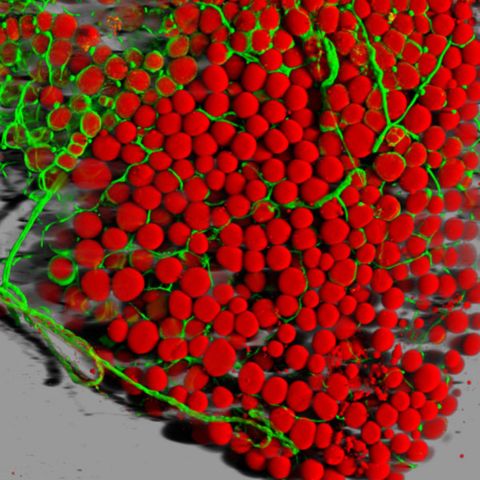Butter, olive oil, coconut oil — what to choose?
Olive, vegetable, canola, avocado, coconut, sunflower seed, almond and many other types of oil line the shelves of most grocery stores in the U.S. Deciding on the appropriate option while facing varying price tags and nutritional facts can be daunting.
To help make the choice easier, Solomon A. Sowah, a research associate, and his team at the University of Cambridge analyzed how various types of dietary fats may impact the health of adults. They published their results in the Journal of Lipid Research.

The health effects of saturated fats, or SFs, may be determined by their chain length and the number of carbon atoms, based on studies that examined the association between plasma fatty acids, or FAs, and the risk of cardiometabolic diseases. For example, plasma SFs with an odd number of carbon atoms are associated with lower risks of type 2 diabetes and cardiovascular disease, or CVD, risk. Conversely, common SFs with an even number of carbon atoms show potential associations with higher risks of type 2 diabetes and CVDs.
“We do know these associations exist, but what we are not sure about is how intakes of different dietary fats impact the concentrations of circulating FAs,” Sowah said.
Different dietary fats contain varied amounts of individual FAs. Comparative studies on how common dietary fats affect blood levels of a variety of FAs — especially odd-chain saturated and trans FAs — are limited. In addition, existing observational studies are often confounded by inaccuracies in self-reported dietary intake.
“We set out to investigate the effects of intake of coconut oil, olive oil or butter fats on plasma FAs,” Sowah said. The team also assessed the association between the changes in major plasma FAs and changes in metabolic markers such as plasma lipids.
The researchers used gas chromatography to measure plasma concentrations of 37 different phospholipid FAs in 96 adults before and after they consumed equal amounts of coconut oil, olive oil or butter for four weeks.
The researchers found that equal amounts of different fat sources altered plasma phospholipid FA concentrations in distinct ways. Coconut oil consumption doubled levels of medium-chain saturated FAs with 12 and 14 carbon atoms, while butter increased odd-chain saturated FAs containing 15 and 17 carbon atoms — an effect not seen with coconut or olive oil. Olive oil led to the greatest rise in oleic acid, a fat commonly found in olives, while coconut oil decreased it. Linoleic acid, which was highest in olive oil compared to coconut oil and butter, did not rise significantly in the olive oil group but did increase in those who consumed coconut oil, though the reason remains unclear.
Despite these changes in blood FA profiles, the study found no strong associations between changes in plasma FAs and shifts in metabolic markers. However, two subtle patterns emerged: higher plasma oleic acid levels were linked to lower high-density lipoprotein, or good cholesterol, and slightly elevated cholesterol markers, while increased trans fats from butter correlated with higher low-density lipoprotein, or bad cholesterol, and triglycerides.
These findings highlight how different dietary fats uniquely influence blood FAs profiles and potentially subsequent risk of cardiometabolic disease and suggest that choosing fats like olive oil, which are lower in saturated and trans fats, may be a heart-healthier option over time.
According to Sowah, they could not distinguish slightly different typesof plasma trans FAs, highlighting the need for advanced chromatography techniques. Future long-term studies with larger sample sizes and varying fat doses will help clarify how specific dietary fats affect blood FA profiles and subsequent cardiometabolic disease risk.
Enjoy reading ASBMB Today?
Become a member to receive the print edition four times a year and the digital edition monthly.
Learn moreGet the latest from ASBMB Today
Enter your email address, and we’ll send you a weekly email with recent articles, interviews and more.
Latest in Science
Science highlights or most popular articles

Bacteriophage protein could make queso fresco safer
Researchers characterized the structure and function of PlyP100, a bacteriophage protein that shows promise as a food-safe antimicrobial for preventing Listeria monocytogenes growth in fresh cheeses.

Building the blueprint to block HIV
Wesley Sundquist will present his work on the HIV capsid and revolutionary drug, Lenacapavir, at the ASBMB Annual Meeting, March 7–10, in Maryland.

Gut microbes hijack cancer pathway in high-fat diets
Researchers at the Feinstein Institutes for Medical Research found that a high-fat diet increases ammonia-producing bacteria in the gut microbiome of mice, which in turn disrupts TGF-β signaling and promotes colorectal cancer.

Mapping fentanyl’s cellular footprint
Using a new imaging method, researchers at State University of New York at Buffalo traced fentanyl’s effects inside brain immune cells, revealing how the drug alters lipid droplets, pointing to new paths for addiction diagnostics.

Designing life’s building blocks with AI
Tanja Kortemme, a professor at the University of California, San Francisco, will discuss her research using computational biology to engineer proteins at the 2026 ASBMB Annual Meeting.

Cholesterol as a novel biomarker for Fragile X syndrome
Researchers in Quebec identified lower levels of a brain cholesterol metabolite, 24-hydroxycholesterol, in patients with fragile X syndrome, a finding that could provide a simple blood-based biomarker for understanding and managing the condition.

